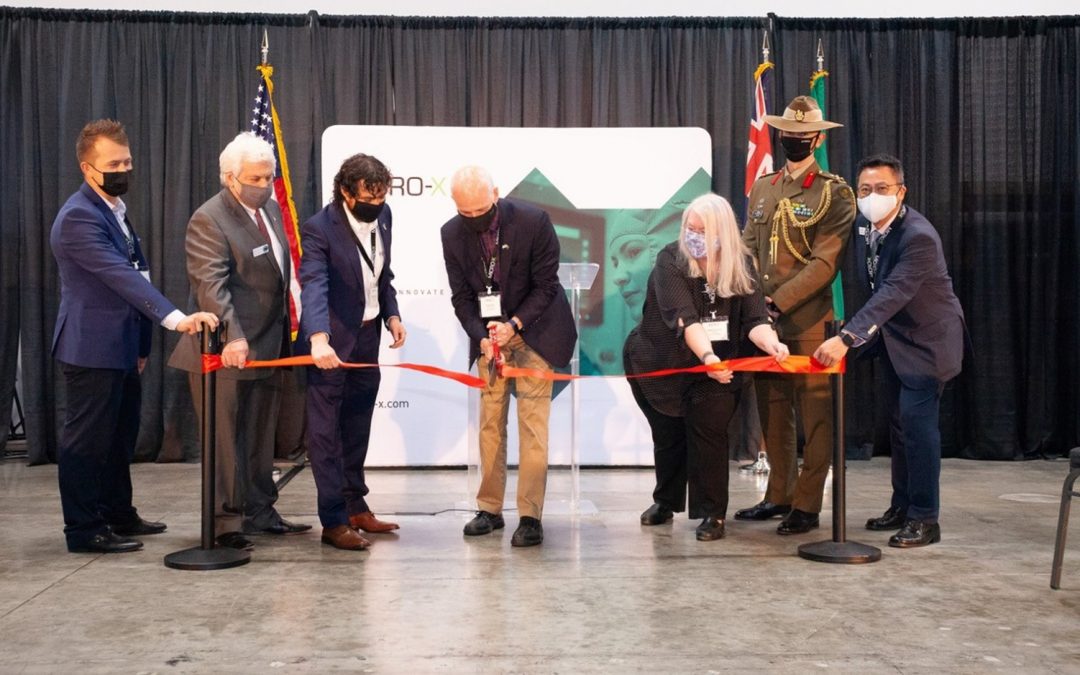SeaTac chosen for Micro-X Inc’s USA headquarter
Official Opening at 10 am PDT, May 28
855 South 192nd Street, Suite B600, Seattle, WA 98148
With:
- Congressman Adam Smith, chair of the House Armed Services Committee
- Brigadier Hugh Meggitt representing Australian Defence Staff, Embassy of Australia
- Stephen Patterson, South Australian Minister for Trade and Investment (Pre-recorded)
- Erin Sitterley, SeaTac Mayor
Technology featured:
- World’s first electronic x-ray tube, leveraging nano technology to create the most significant innovation in x-ray tubes in over 100 years
- Rover: the first FDA cleared system using Micro-X’s revolutionary x-ray technology
- Prototype self-service baggage scanner, receiving funding to reimagine the future of airport security
Australian company, Micro-X has chosen SeaTac, Washington State, as its US headquarters as it expands its capabilities to better support their rapidly growing business.
The proximity to the Airport for Micro-X’s future airline passenger self-screening development, the exceptional level of software talent in the greater Seattle Region, and the room in south King County for the company’s expansion plans all contributed to SeaTac being chosen as the ideal location.
Micro-X has reinvented how X-rays are generated. Using their patented carbon nanotube X-ray cold emitter technology they’ve invented Rover, a mobile X-ray machine that weighs less than 220 lbs and is ruggedized for high-intensity use in field hospitals and remote locations*.
But the technology can do much more. It could transform airport security across America, enabling faster and more reliable X-ray baggage screening, reimagining airport checkpoints.
“Today, we’re expanding our US operations,” says Peter Rowland, Micro-X Australian CEO.
“Our new SeaTac facility will be a center of excellence for imaging product development that will revolutionize medical, defense, and security x-ray imaging,” says Brian Gonzales CEO of Micro-X’s rapidly expanding US operations.
“Our mobile X-ray machines are available now for use in public and military hospitals. They’re lighter, cheaper, more robust, and more precise than our competitors.”
“In Australia we’re developing a CT brain scanner, so small and so light that it will integrate into any ambulance allowing brain scans at the point-of-care.”
“Our team here at SeaTac will work on proprietary imaging software and algorithms as part of this project as well as lead our work with the US Government to reinvent airport checkpoints. Our vision is for a self-service booth that provides a 3D image of carry-on luggage together with a body scanner and passport reader,” says Brian.
“We’re excited to be investing in SeaTac and Washington State, the home of many global leaders in innovation and technology. We thank Congressman Adam Smith and SeaTac Mayor Erin Sitterley for their warm welcome,” says Brian.
The patented invention that makes all these ideas possible is inside our 3.3 lb x-ray tube which replaces a conventional x-ray tube weighing more than 44 lbs.
Traditional x-ray tubes use a hot filament, like an old-fashioned light bulb, to generate the electron stream needed to make x-rays.
But Micro-X’s technology applies voltage to an emitter made from carbon nanotubes (CNT) to generate the stream of electrons instead. It’s smaller, more energy efficient and longer lasting, like LED lights.
Not only are the devices much lighter, they produce a beam that can be controlled instantly and precisely by simply adjusting the voltage, revolutionizing how x-ray products are used worldwide.
*For use only in medical environments.

